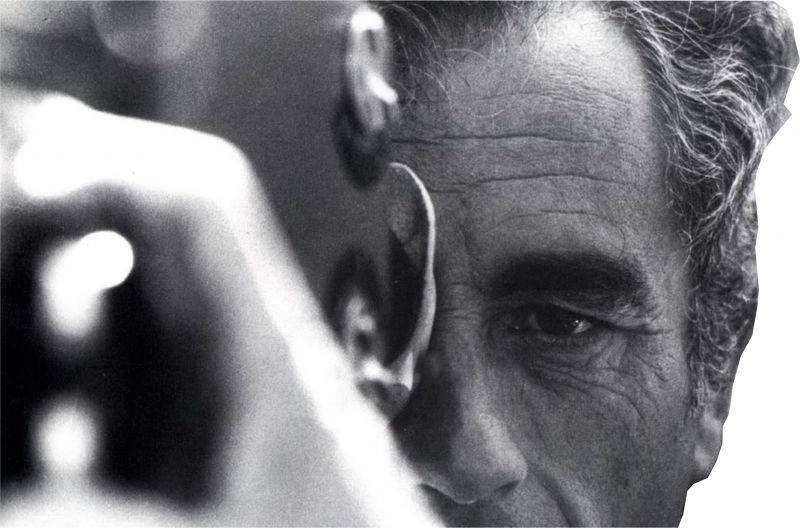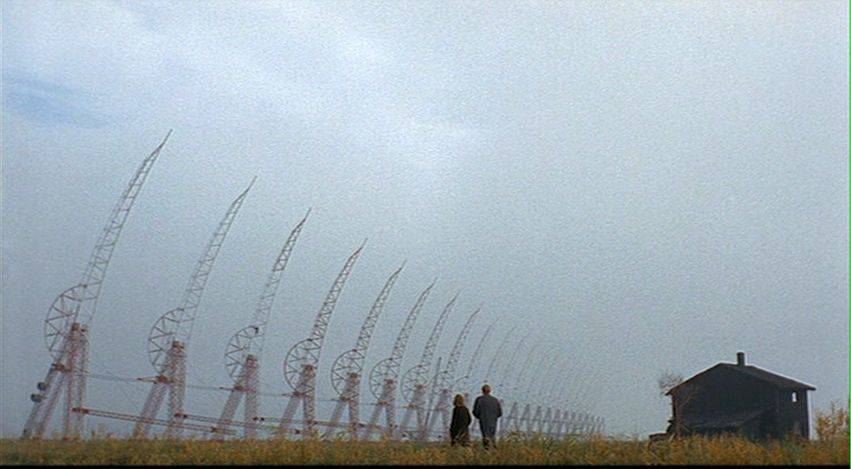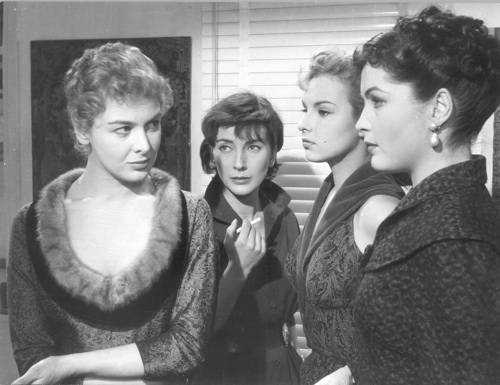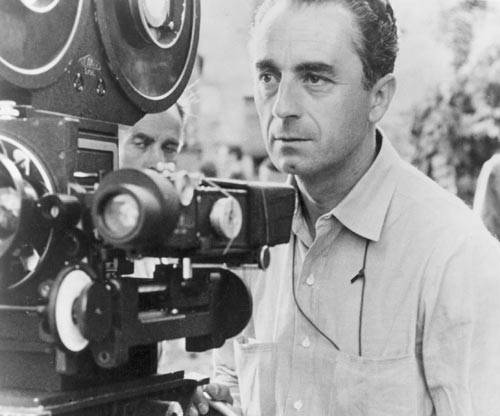Antonioni 1912/2012: An Homage
In Ravenna, Italy, Giuliana (played by Monica Vitti) is walking with her young son, Valerio, towards the petrochemical plant managed by her husband, Ugo. Passing workers who are on strike, Giuliana nervously and impulsively purchases a half-eaten sandwich from one of the workers. They are surrounded by strange industrial structures and debris that create grotesque and inhuman images and sounds. Inside the plant, Ugo (played by Carlo Chionetti) is talking with a visiting business associate, Corrado Zeller (played by Richard Harris), who is looking to recruit workers for an industrial operation in Patagonia, Argentina. Ugo and Corrado converse comfortably in the noisy factory. Ugo tells Corrado that his wife, Giuliana, had a recent auto accident, and though she was physically unhurt, she has not been right mentally.
This is the beginning of Red Desert (1964), Michelangelo Antonioni's masterwork,
“a plangent anti-romantic melodrama and a prescient environmentalist masterwork,” the New Yorker writes. This film on “the inseparability of human identity from the ambient influences of the surrounding world, whether media, politics, architecture, nature, or fashion,” has recently been the main topic of many discussions held in different Italian cultural centers.
The Italian community is indeed celebrating the centenary of the birth of one of the greatest Italian movie directors of all time with a series of events. Antonioni, also a screenwriter, editor, writer and painter, is an icon of Italian cinema worldwide. The celebrations were organized by the Italian Cultural Institute, the Museum of Moving Image, the Casa Italiana Zerilli Marimò, the Queens College City University of New York and Cinecittà Luce, Rome.
It all started on March 29th at Italian Cultural Institute with a screening of Antonioni's fourth film The Girlfriends (1955), and an introduction by David Forgacs, Professor of Contemporary Italian Studies at the New York University Department of Italian Studies.
Adapted from Cesare Pavese's novella Among Women Only, The Girlfriends starts with the suicide attempt of a young woman, Rosetta (played by Madeleine Fischer), in a Turin hotel. She is discovered by Clelia (played by Eleonora Rossi Drago) who has returned from Rome to oversee the opening of a fashion store. Through Rosetta's friend Momina (played by Yvonne Furneaux), Clelia meets a group of young women and artists who expose her to a world of sexual entanglements and infidelities and force her to confront her own values and desires. The film differs from the novel, yet the main plot is the same.
“Antonioni uses a mystery, in this case the reason why Rosetta has tried to kill
herself, to hook the audience but that is not the main focus of the story, that is just a way to grab you and keep you interested,” professor Forgacs explained.
Mystery, the figure of the wandering woman, automation, geopolitical abstraction, toxicology, modernity are some of the topics of his cinema that were discussed on March 30th at Casa Italiana Zerilli Marimò during Antonioni 1912/2012, aone-day symposium. Organized jointly by Departments of Italian Studies and Cinema Studies, NYU and Casa Italiana, the conference welcomed: Richard Allen (NYU), Francesco Casetti (Yale), David Forgacs (NYU), Ara Merjian (NYU), Matilde Nardelli (UCL, London), Karen Pinkus (Cornell), John David Rhodes (Sussex), Karl Schoonover (Warwick), Michael Loren Siegel (Brown).
In “Hitchcock, Antonioni and the Wandering Woman,” Professor Allen spoke about the influence that Antonioni's cinema had on Hitchcock's. The British director was an avid student of Italian cinema as he considered it to be more sophisticated and natural. “The figure of the wandering woman is present in works by both directors,” Allen explained, “but in Antonioni's films the woman is adrift, she has nothing specific in mind, differently from the woman in Hitchcock's. They move alone in the landscape, they are watched, they are an enigma.”
Karen Pinkus in “Automation, Autonomia, Anomie” spoke of the director's fascination with technology. Red Desert was used as the main example. “Antonioni celebrates the alluring abstractions of high-tech industry itself, with its pure geometry of spheres, arcs, and planes. The smears of smoke and blasts of steam, the luridly unnatural riot of acid colors, the towering blankness of looming tankers, and the delicate latticework of colossal radio-telescope towers suggest a visionary world of wonder that comes at the cost of the slate-gray, dying river nearby, the dead-black terrain that smolders with toxic smoke, and the dereliction of its waterfront wastelands,” Richard Brody wrote in a review of the film for the DVD release.
Many of the speakers who attended the symposium at the Casa Italiana have their presentations featured in a collection of essays edited by John David Rhodes by the title Antonioni: Centenary Essays. “This collection of new essays by leading film scholars addresses Michelangelo Antonioni's pre-eminent figure in European art cinema, explores his continuing influence and legacy, and engages with his ability to both interpret and shape ideas of modernity and modern cinema.”
The program continues on April 5th, 2012 at 10:00 AM, Queens College City University of New York with the symposiumThe Gaze Elsewhere: Michelangelo Antonioni Centenary.
Curated by Eugenia Paulicelli, the symposium welcomes Marco Natoli (University of Massachusetts) "Michelangelo Antonioni's Chung Kuo China: Expectations, Reception and censorship"; David Ward (Wellesley College), "Antonioni's Objective Eye"; Ronald Gregg (Yale), "Antonioni and the Aesthetics of 'Eclipse'.
From Friday, April 6th to Sunday, April 8th, 2012 there will be screenings of Antonioni's films and documentariesat the Museum of the Moving Image.
Friday, April 6th, at 7:00 PM
The Red Desert (1964) restored print of Antonioni's first color feature.
Saturday, April 7th, and Sunday, April 8th, at 2:00 PM
Antonioni's documentary shorts, introduced on April 8th by John MacKay, Yale University:
Gente del Po (1943/47), N.U. (1948), L'amorosa menzogna (1949), Superstizione (1949), Sette canne, un vestito (1949), La villa dei mostri (1950), Vertigine (1950), Ritorno a Lisca Bianca (1983), Kumbha Mela (1989), Roma (1990), Noto (1992), Sicilia (1997).
Antonioni began his career making documentaries. Rarely seen outside Italy, these films offer a deeper understanding of the aesthetic he developed in later years. As Antonioni said of his first documentary, Gente del Pò (People of the river Pò), filmed in 1943, “Everything that I made afterward, either good or bad starts from there, from this film on the River Pò.” In these documentaries, we see Antonioni's roots in the aesthetic of neorealism through his eye for social reality, but we also see the beginnings of another eye, one that looks below the surface of the image for a deeper, more complicated and contradictory reality that goes beyond the social. These documentaries also reveal Antonioni's life-long interest in process and duration in the way his unobtrusive camera follows events as they unfold in time according to their own narrative logic and pace.
Saturday, April 7th, and Sunday, April 8th, at 5:00 PM
Chung Kuo Cina (1972): Antonioni's rarely screened 4-hour documentary shot in China.











































i-Italy
Facebook
Google+
This work may not be reproduced, in whole or in part, without prior written permission.
Questo lavoro non può essere riprodotto, in tutto o in parte, senza permesso scritto.